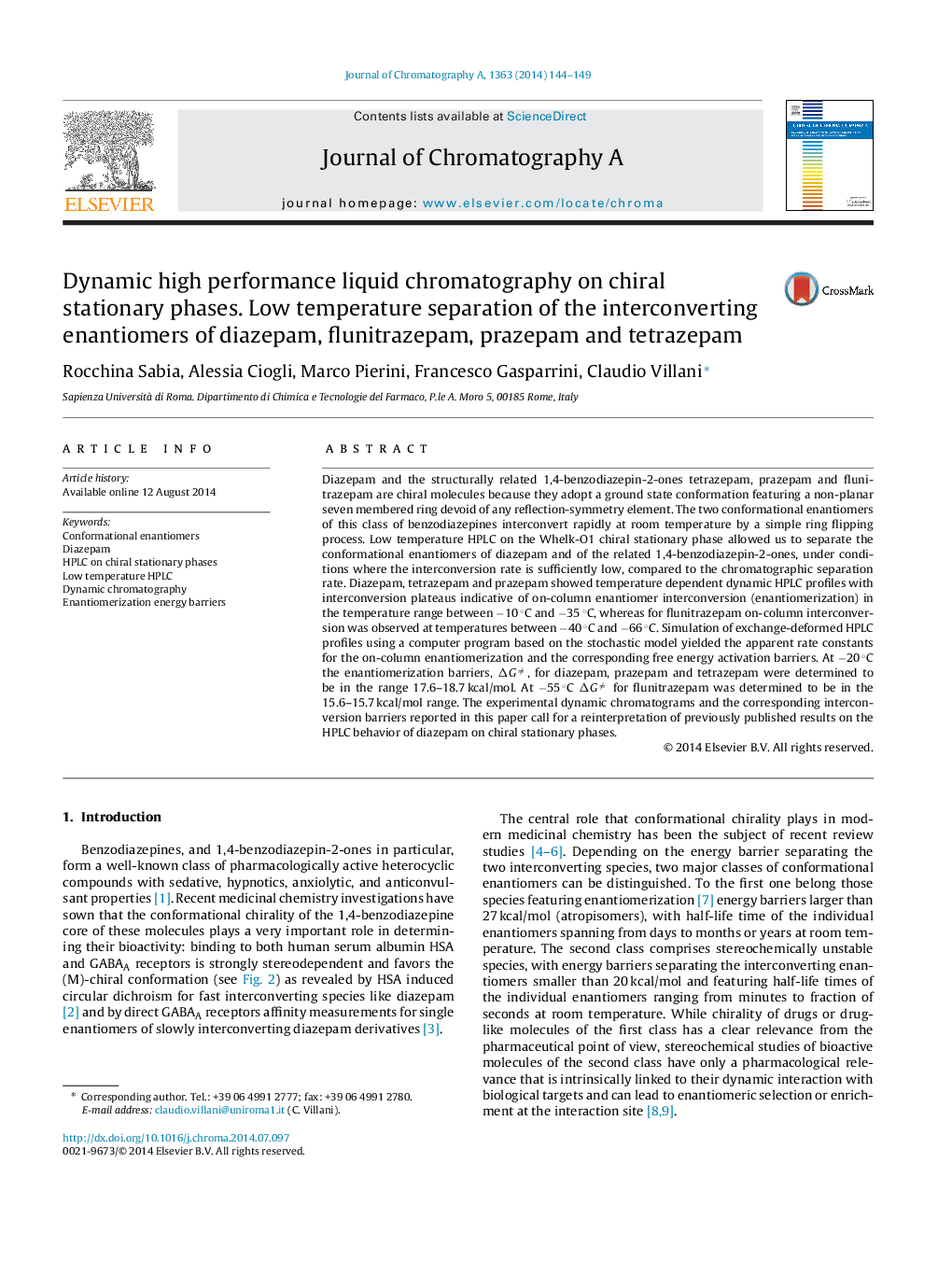| Article ID | Journal | Published Year | Pages | File Type |
|---|---|---|---|---|
| 1199167 | Journal of Chromatography A | 2014 | 6 Pages |
•The conformational enantiomers of diazepam were resolved by cryo-HPLC on Whelk-O1.•Prazepam, tetrazepam and flunitrazepam were also resolved on the Whelk-O1 CSP.•Dynamic HPLC and computer simulation gave the enantiomerization energy barriers.•The energy barriers measured by DHPLC are between 15.54 and 18.73 kcal/mol.
Diazepam and the structurally related 1,4-benzodiazepin-2-ones tetrazepam, prazepam and flunitrazepam are chiral molecules because they adopt a ground state conformation featuring a non-planar seven membered ring devoid of any reflection-symmetry element. The two conformational enantiomers of this class of benzodiazepines interconvert rapidly at room temperature by a simple ring flipping process. Low temperature HPLC on the Whelk-O1 chiral stationary phase allowed us to separate the conformational enantiomers of diazepam and of the related 1,4-benzodiazepin-2-ones, under conditions where the interconversion rate is sufficiently low, compared to the chromatographic separation rate. Diazepam, tetrazepam and prazepam showed temperature dependent dynamic HPLC profiles with interconversion plateaus indicative of on-column enantiomer interconversion (enantiomerization) in the temperature range between −10 °C and −35 °C, whereas for flunitrazepam on-column interconversion was observed at temperatures between −40 °C and −66 °C. Simulation of exchange-deformed HPLC profiles using a computer program based on the stochastic model yielded the apparent rate constants for the on-column enantiomerization and the corresponding free energy activation barriers. At −20 °C the enantiomerization barriers, ΔG≠, for diazepam, prazepam and tetrazepam were determined to be in the range 17.6–18.7 kcal/mol. At −55 °C ΔG≠ for flunitrazepam was determined to be in the 15.6–15.7 kcal/mol range. The experimental dynamic chromatograms and the corresponding interconversion barriers reported in this paper call for a reinterpretation of previously published results on the HPLC behavior of diazepam on chiral stationary phases.
